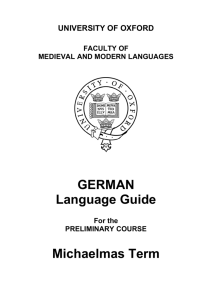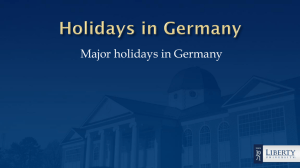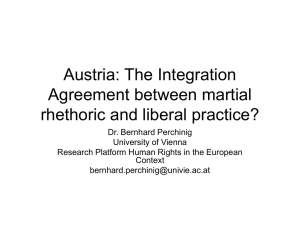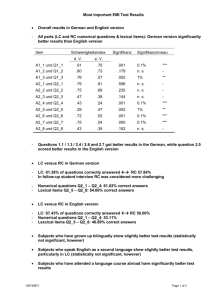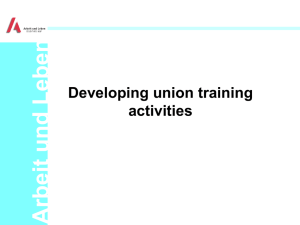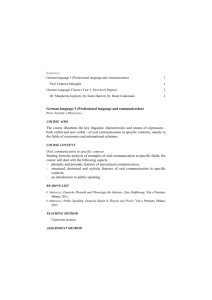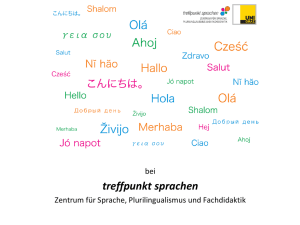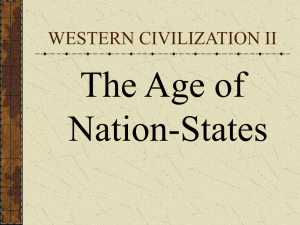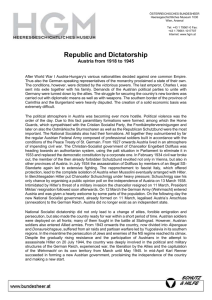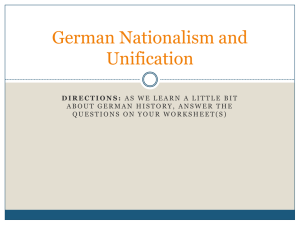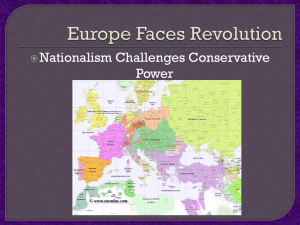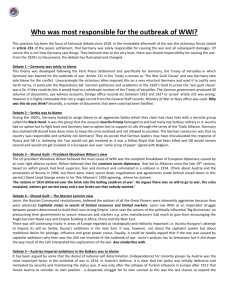Feste und Feiertage
advertisement
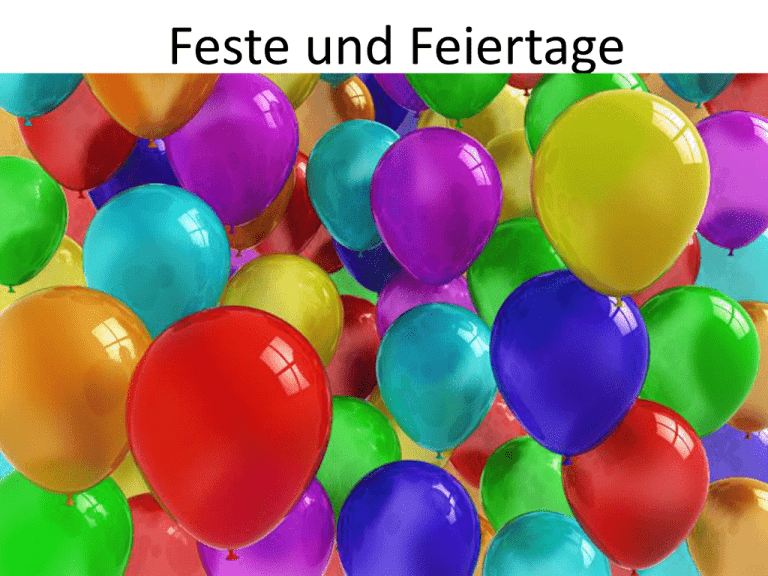
Feste und Feiertage JANUAR Feuerwerk Bleigießen – “lead pouring” • An old practice using molten lead like tea leaves. • A small amount of lead is melted in a tablespoon (by holding a flame under the spoon) and then poured into a bowl or bucket of water. The resulting pattern is interpreted to predict the coming year. – For instance, if the lead forms ein Ball, that means luck will roll your way. The shape of ein Anker (anchor) means help in need. But ein Kreuz (cross) signifies death! Feuerzangenbowle • A popular traditional German New Year's drink. • Part of the popularity of Feuerzangenbowle is based on a classic novel of the same name by Heinrich Spoerl (18871955) and the 1944 film version starring the popular German actor Heinz Rühmann. • The hot punch drink's main ingredients are Rotwein, Rum, Orangen, Zitronen, Zimt und Gewürznelken (cloves). Heilige Drei Könige – 6. Januar • The twelve days of Christmas end with the Feast of Epiphany also called "The Adoration of the Magi" or "The Manifestation of God." • It is known as the day of the Three Kings (or wise men/magi): Caspar, Melchior and Balthasar. • January 6, the last day of Christmas, comes with its own traditions, rituals and symbols. – In many homes the Christmas tree is taken down and in some areas is burnt in a big bonfire. Now is when the children get to “plündern” (raid) the tree of all the sweets that were used as ornaments. – The custom of the Star Singers, reminiscent of the travel of the Three Kings is still very much alive in Bavaria and Austria. Beginning with New Years and through January 6, children dressed as the kings, and holding up a large star, go from door to door, caroling and singing a Three Kings' song. For this they receive money or sweets. Formerly the collected donations went to unemployed craftsmen and veterans; today they go to charities of the church or the Third World. FEBRUAR • Sankt Valentin and the lovers' celebration in his name are not traditionally German, but in recent years Valentinstag has become increasingly popular in Germany. • In Germany men and women give each other flowers as an expression of love. The symbol of love for Germans are red Roses. – "Dunkelrote Rosen, bring ich schöne Frau, und was das bedeutet, wissen Sie genau," goes one song. Mariä Lichtmess – 2. Februar • Mariä Lichtmess (Candlemas) was an official holiday in Germany until 1912. • The Roman Catholic Church has celebrated the feast day of Candlemas since 1960. • It commemorates the purification of the Virgin Mary and the presentation of Jesus in the Temple at Jerusalem. • It is named after the candle light procession, which precedes the mass. MÄRZ APRIL • The Germanic celebration of Easter (Ostern in German) is very much like that in most of the Christian world. It features the same fertility and spring-related icons—eggs, bunnies, flowers—and many of the same Easter customs. The art of decorating hollowed-out eggs (ausgeblasene Eier) for Easter is an Austrian and German tradition. • The Easter celebration (das Osterfest) takes on both religious and secular forms. The Christian religious celebration is the most important day in the church calendar, reflecting Christianity's very beginnings in the Resurrection of Jesus. MAI • In Austria, Germany, and Switzerland Muttertag is observed on the second Sunday in May. • During WWI, Switzerland was one the first European countries to introduce Mother's Day (in 1917). Germany's first Muttertag observance took place in 1922, and Austria's in 1926. • Muttertag was first declared an official German holiday in 1933 and took on a special significance as part of the Nazi motherhood cult under the Hitler regime. – There was even a medal—das Mutterkreuz—in bronze, silver, and gold (eight or more Kinder!), awarded to mothers who produced children for the Vaterland. (The medal had the popular nickname of "Karnickelorden," the "Order of the Rabbit.") • After World War II the German holiday became a more unofficial one that took on the cards-and-flowers elements of the U.S. Mother's Day. Erster Mai / Tag der Arbeit • Known in most parts of the world as Labor Day (Tag der Arbeit), May 1st is also related to the Maypole (der Maibaum) and the welcoming of spring, especially in Austria and Bavaria. • Unlike the U.S. observance, which cuts across all classes, Germany's Tag der Arbeit and most European Labor Day observances are primarily a working class holiday. •In Austria and many parts of Germany, especially in Bavaria, the tradition of raising a Maypole (Maibaum) on May 1 still serves to welcome spring. •It’s a tall wooden pole made from a tree trunk (pine or birch), with colorful ribbons, flowers, carved figures, and various other decorations. •Maibaum reflects the custom of placing a small pine tree atop the Maypole, which is usually set up in a town's public square or in front of city hall. Traditional dances, music, and folk customs are often associated with the Maypole. SEPTEMBER NOVEMBER Martinstag • The Catholic Martinstag observance is held on November 11. • According to legend, Martin cut his red cloak in half to share with a beggar during a snowstorm. Today, one can see costumes of red cloaks on this day. • The traditional baked goose (Martinsgans) meal is based on another part of the legend. Feeling unworthy of becoming a bishop, Martin hid in a stable filled with geese. The noise made by the geese betrayed his location, and the people of Tours had him consecrated as a bishop. • In parts of Austria, Germany, and Switzerland the Martinstag observance is a children’s affair. Carrying paper lanterns they have made in school, the young children take part in an evening procession, sometimes led by a rider on a white horse, emulating St. Martin and his red cloak. Sometimes the lantern procession ends with a Martinsfeuer (bonfire). Allerheiligen / Allerseelen – 1. und 2. November • All Saints/All Souls became focal points of veneration of the dead ever since Pope Gregory in 835 initiated the church wide celebration. • Allerheiligen was at first celebrated to honor all martyrs, later including all saints, known and unknown, and it now honors all those who died in the faith. Devout Catholics would take the name of the saint on whose feast they were baptized and would celebrate their “nameday” every year. DEZEMBER Heiliger Abend Geburtstag
